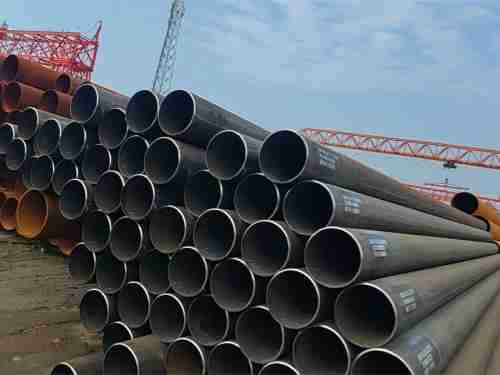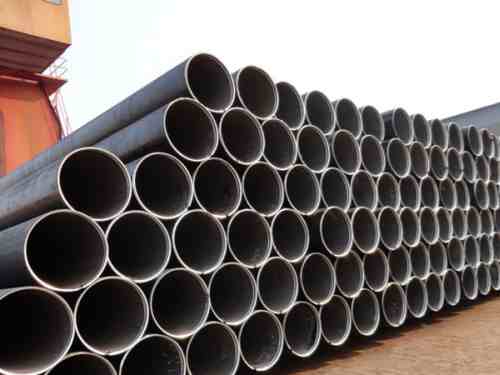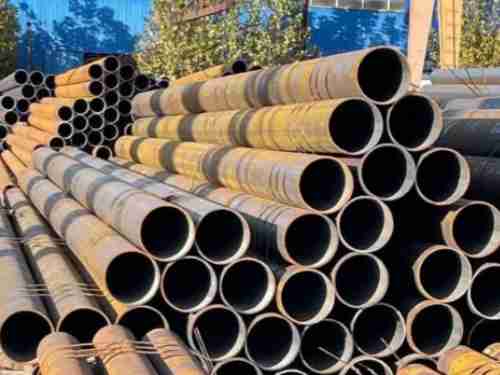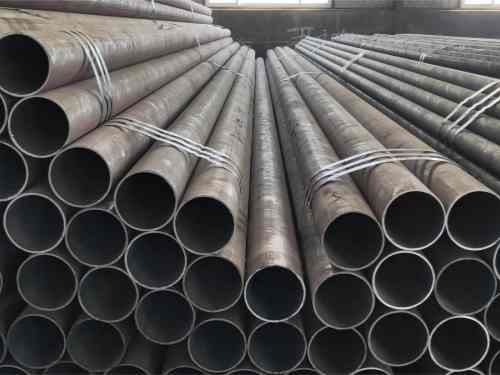In industrial applications, pipes are critical components for transporting various fluids and gases. They are widely used in sectors such as oil and gas, construction, and machinery manufacturing. Due to differences in production methods, structural features, and mechanical performance, different types of pipes serve distinct purposes. Among these, Electric Resistance Welded (ERW) pipes and Drawn Over Mandrel (DOM) pipes are two commonly used pipe types, each with unique advantages. Understanding the differences between ERW and DOM pipes can help engineers and project managers choose the most suitable pipe for specific applications, ensuring better performance, safety, and cost-effectiveness.
What is ERW Pipe?
ERW (Electric Resistance Welded) pipe is manufactured by forming steel strip (typically low-carbon or low-alloy structural steel) into a cylindrical shape and welding the seam using high-frequency electric resistance. The welding process relies on the skin effect and proximity effect of high-frequency currents to rapidly heat the edges of the strip to a molten state, followed by pressure welding. The result is a strong, continuous weld created without the need for filler materials.
Key Benefits of ERW Pipes:
High production efficiency and lower costs
Good dimensional accuracy
Narrow and smooth weld seams that are often barely visible after finishing
Enhanced appearance and reduced flow resistance inside the pipe
Common Applications: ERW pipes are widely used in oil and gas pipelines, building infrastructure, scaffolding, and machinery manufacturing due to their balance of cost and performance.
What is DOM Pipe?
DOM (Drawn Over Mandrel) pipe is a type of high-precision steel pipe manufactured by cold drawing an ERW pipe through a die and over a mandrel. The process removes weld flash and significantly enhances the dimensional accuracy, surface finish, and overall mechanical properties of the pipe. Typically made from 1020 or 1026 steel, DOM pipes offer near-seamless characteristics despite originating from welded tubes.
Key Benefits of DOM Pipes:
Extremely tight tolerances on inner and outer diameters
Excellent surface finish with virtually no visible weld seam
Improved mechanical properties including strength, concentricity, and roundness
Common Applications: Due to their high precision, DOM pipes are ideal for use in automotive components (e.g., drive shafts, shock absorber cylinders), hydraulic systems, and precision machinery parts.
Comparative Analysis: ERW vs DOM Pipes
|
Aspect
|
ERW Pipe
|
DOM Pipe
|
|
Production Process
|
Welded from steel strip using high-frequency electric resistance welding
|
Further processed from ERW pipe through cold drawing over a mandrel
|
|
Surface Appearance
|
Visible weld seam (although refined); smooth exterior after finishing
|
Seamless-like appearance with excellent surface quality inside and out
|
|
Precision & Tolerances
|
Moderate precision; suitable for general use
|
High dimensional precision; suitable for precision applications
|
|
Mechanical Properties
|
Good strength for general applications; weld is a potential weak point
|
Enhanced strength and concentricity; weld zone is eliminated and refined
|
|
Typical Applications
|
Oil/gas transport, construction, structural uses
|
Automotive components, hydraulic systems, precision engineering
|
|
Cost Efficiency
|
Lower production cost; economical for large-scale applications
|
Higher cost due to complex processing and precision requirements
|
Conclusion
Both ERW and DOM pipes serve important roles in modern industry. ERW pipes offer a cost-effective solution with adequate performance for a wide range of general applications, while DOM pipes provide the precision and strength needed for critical, high-performance applications. Choosing between them should be based on specific project requirements such as pressure rating, dimensional tolerance, surface finish, and budget constraints. For optimal results, it’s recommended to consult with material specialists or manufacturers to select the most suitable type of pipe for your application.

 English
English Español
Español











